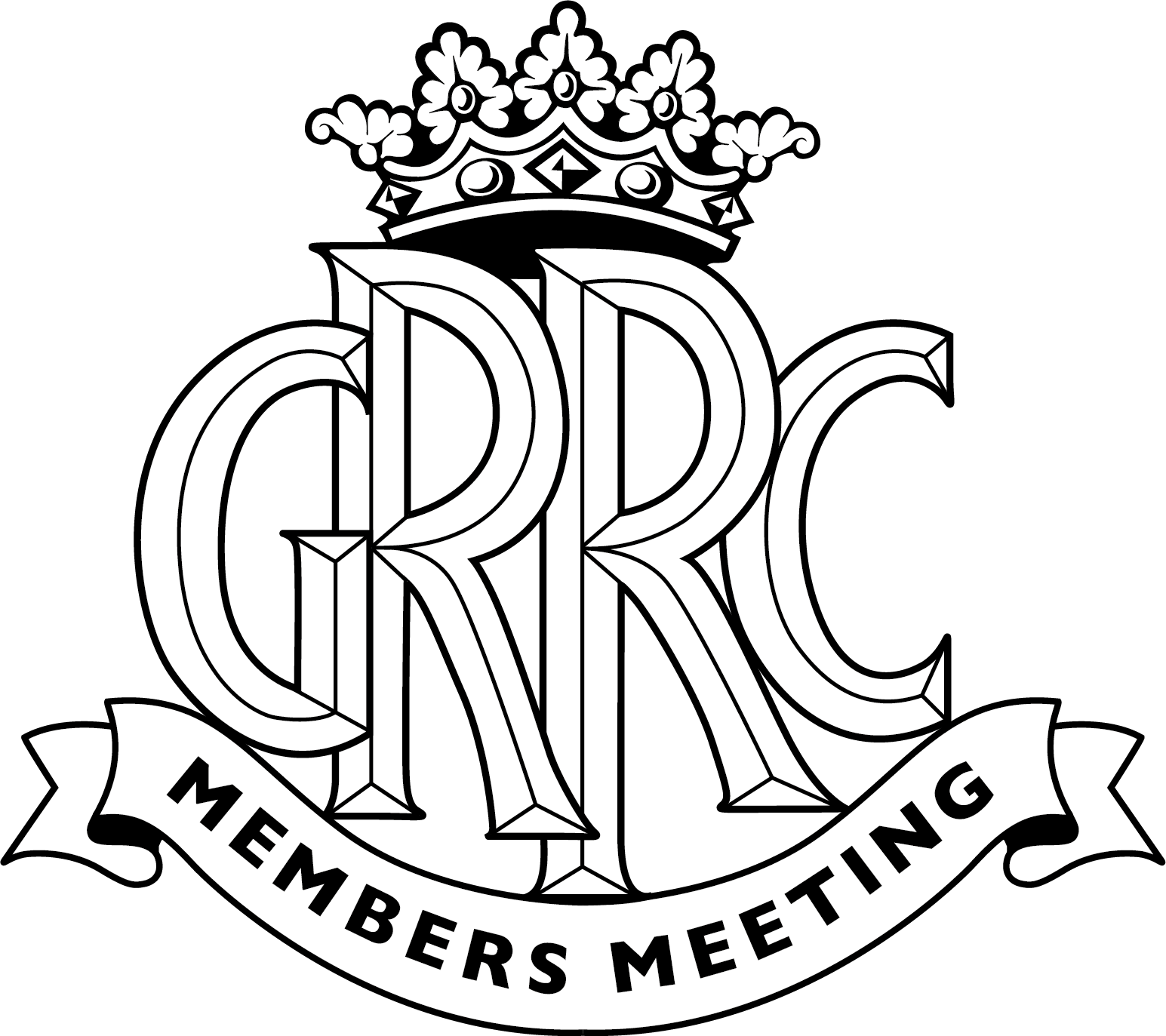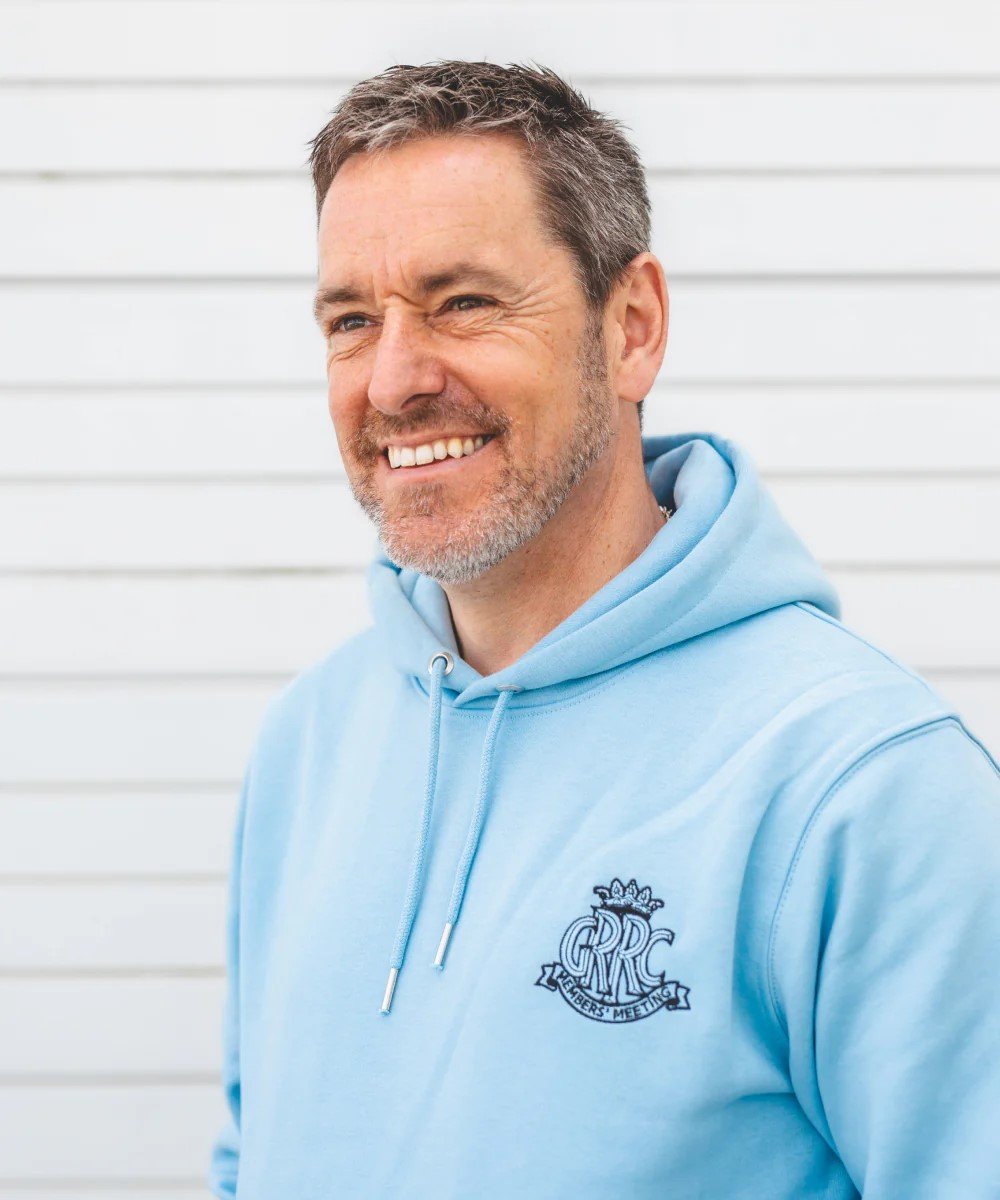Doug Nye – Celebrating Sir Jack Brabham
 Doug Nye
Doug Nye
Over 15 years, from 1955 to 1970, the late Sir Jack Brabham probably completed more laps of the Goodwood Motor Circuit, in racing and testing, than any other frontline driver. At this year’s Revival Meeting we will present a special tribute to the immensely respected and popular Australian star upon the 50th anniversary of his third Formula 1 Drivers’ World Championship title.

With very, very special people, there is usually more to the plot than just a single facile statement of success. Jack was certainly very, very special – indeed – and in his case his third Drivers’ World Championship – so well won in 1966 – was accompanied by his becoming the first-ever (and so far only) racing driver to add the Formula 1 Constructors’ Championship title because the Repco Brabham cars that he had driven were manufactured by his own company.
Thinking back over that 50-year range, perhaps the single most decisive factor in ‘Black Jack’s success that season with his Repco Brabham Formula 1 cars was actually his wily experience and simple practicality.
The 1966 season saw a brand-new Formula 1 introduced, with technical regulations hailed as ‘The Return of Power’. Five years of 1½-litre Formula 1 racing had just ended, to be replaced by naturally-aspirated racing engines of double the capacity – a full 3-litres. There was a time bomb buried in those regulations – a paragraph which permitted alternative use of forced-induction engines (ie supercharged or turbocharged instead of naturally-aspirated) so long as their maximum capacity did not exceed 1½-litres. It would be eleven years before Renault Sport would take advantage of that allowance, and would turn Formula 1 upon its head.
But, returning to 1966 specifically, amongst the full 3-litre cars so assiduously tested at Goodwood before the season began there were some extremely complicated approaches to the new Formula. Cooper had invested in somewhat antiquated, large, and fuel-thirsty V12-cylinder engines from Maserati in Italy. Lotus had attracted interest from the Ford Motor Company who were financing development of a brand-new power unit by Keith Duckworth of Cosworth Engineering. Pending its appearance they would use 2-litre versions of old 1 ½-litre Formula Coventry Climax and BRM V8 engines, before aspiring to the very latest full 3-litre from BRM – a coupled-crankshaft ‘H’16 in which effectively two flat-8s (produced by opening out their V8 design) were united one above the other in a doubled-up common crankcase. BRM invested hugely in money, men and time where their H16 was concerned, but as team driver Jackie Stewart would later declare; “It did’nae do us any good…”. And Ferrari in Italy – pretty much cash-strapped at the time - rummaged around their parts stores and came up with a sports car-derived 3-litre V12 which their numero uno driver, John Surtees, described as being “…too big, too heavy, too thirsty and unable to pull the skin off a rice pudding”.

Jack’s team-mate Denny Hulme, in the bulging pannier-tanked Repco Brabham BT20.
Honda in Japan would also join in the fray, producing a wonderful 3-litre 4-cam V12-cylinder Formula 1 engine that performed great guns on the dyno, but didn’t work so well in the huge and hefty car required to accommodate all the fuel it voraciously demanded.
And Dan Gurney, Jack Brabham’s former team-mate in the Brabham F1 team, had followed his friend and mentor’s lead into building his own Formula 1 car – the Eagle – and had contracted Harry Weslake Research to create for him a dedicated ultra-modern 3-litre V12 engine, which would be slim, light, fuel-sparing, and very powerful. But that engine too would be late in appearing, and so he would make his debut in his own F1 car with an upgraded 2.75-litre Coventry Climax 4-cylinder engine behind his back. Yet another Brabham alumnus, Bruce McLaren, who had been with Cooper since Jack’s first two World Championship–winning years with the team in 1959-60, was another to have followed the influential Australian’s lead – and he too was creating his own Formula 1 programme for the new year, using initially a linered-down 3-litre version of the massive Indy Ford V8 Speedway engine.
So against all this often complex diversity, what did Jack Brabham do? With his business partner – and deeply talented designer – Ron Tauranac in charge, their Motor Racing Developments company had begun manufacturing production Formula Junior cars in Surbiton during the winter of 1961/62. But during their formative years in Australian racing, both Tauranac and Brabham had been regular customers of Geoffrey Russell’s Replacement Parts Pty Ltd company which had long since adopted the ‘Repco’ brand name.
Tauranac and Brabham’s first prototype Formula Junior car had emerged during 1961, and had been campaigned at Goodwood driven by Tasmanian Gavin Youl. They had called it simply the MRD after the initials of their new company, but with customer production and sales in view for the following year, they [paid attention when French-based journalist friend ‘Jabby’ Crombac pointed out that the letters ‘MRD’ – when pronounced the French way – represented something that nobody would wish to buy, indeed something which they were more likely to have to scrape off their shoes… So the ‘Brabham’ name had been adopted instead.

Jack Brabham after winning the 1966 German GP at the Nurburgring.
In fact production of their first Brabham FJ cars began in Victoria Road, Surbiton, using a warehouse property rented for them, then sub-let, by Repco’s UK marketing arm. In return the cars would be marketed under the ‘Repco Brabham’ name. Repco had a major interest down-under in Tasman Formula racing dominated by 2 ½-litre Climax 4-cylinder engines, for which Repco manufactured many parts and with Coventry Climax’s blessing ran a sales and service programme for Australia and New Zealand.
What became the Repco V8 Formula 1 engine for 1966 was conceived in January 1964, when Repco’s Melbourne management appreciated that supplies of Climax 4-cylinder engine parts would probably dry up within the life of the existing Tasman Formula. Chief Engineering Frank Hallam and Project Engineer Phil Irving – of UK Vincent motor-cycle fame – were authorized to produce a new engine suitable for Tasman racing, and which would fit into the existing Repco Brabham Tasman chassis.
Their answer – with Jack Brabham’s encouragement – was a V8 based upon an existing General Motors-made Oldsmobile F85 all-aluminium cylinder block. The American project had flopped and Repco effectively picked up some of the pieces, while Bruce McLaren picked up most of the remainder for his initial McLaren-Oldsmobile sports car programme.
Hallam found that the Olds V8 block could accommodate a range of displacements from 2.5 to 4.4-litres. It needed stiffening and its original central camshaft was replaced by a still-humble single overhead camshaft per cylinder bank, in new cylinder heads. With only two valves per cylinder it was a very modest and ‘un-racy’ architecture, but the resultant 3-litre Formula 1 V8 was intensely practical, and light, and economical, and Clever! Here was Aussie can-do at its finest.
Only 51 weeks after Hallam and Irving had first set pen to paper, on March 21, 1965, the Repco V8 ran for the first time on a Melbourne dyno. The engine provided a broad and useable power band, promising great drivability. It offered useful torque from 3,500rpm, began to fly at 4,000, and gave peak torque at 6,000. It would rev freely to 8,000rpm – and it weighed only 340lbs. Fuel consumption was around 8mpg.
In Ron Tauranac’s proven recipe of lightweight, good handling multi-tubular spaceframe chassis, this uncompromisingly sensible racing engine looked good for the opening season of an otherwise complex new racing Formula. To save time the little Brabham Racing Organisation team based beside the River Wey Navigation at New Haw Lock, Byfleet, dusted-off a hitherto unused chassis built for the still-born Coventry Climax flat-16 engine of 1965 – the Repco Brabham BT19. This unique car used unusual oval-section tubing to strengthen the customarily weak area around the cockpit opening, and it would be joined in the little team by a pair of dedicated new Repco Brabham BT20 chassis, to be driven by Jack’s chosen new number two driver Denny Hulme, and also subsequently – late-season ’66 – by himself.

Sun shining on Jack Brabham as his Repco Brabham BT19 carries him towards 1966 German GP victory.
Both Jack Brabham and Dan Gurney had asked gearbox specialist Mike Hewland to produce suitable new heavier gearboxes for their new 1966 F1 cars. Mike did so, and christened it the Hewland DG. This really pleased Dan, very nice of Hewland to adopt his initials for the new unit, but when I asked Mike years later if that was the case he explained how in fact someone unremembered had leaned over his shoulder while he was working at his design and asked “What’s this? A different gearbox?” – and ‘DG’ for ‘Different Gearbox’ it became…
But Jack’s Repco Brabham BT19 emerged as one of the very lightest true 3-litre F1 contenders, and its economical V8 engine meant it could complete a full-length Grand Prix on only 35 gallons of Esso fuel. Even so, BT19 was some 150lbs over the minimum weight limit of 1102lbs and Ron was far from happy with it, describing it to me as “a lash-up”.
This was even after it had – in Jack’s highly-=skilled hands – won four consecutive mid-season ‘’66 Grand Prix races, at Reims in France (on July , Brands Hatch in Great Britain, Zandvoort in Holland and the Nurburgring in Germany. Such a run kicked all the opposition – BRM, Ferrari, Lotus, you name them – into touch, gave Jack his third Drivers’ World title and brought MRD the Constructors’ Cup. The year had also seen Jack win both the non-Championship BRDC International Trophy race at Silverstone and the Oulton Park Gold Cup in the BT19 – so six F1 race wins all to the credit of the self-same individual Grand Prix car…
And there was even more Brabham success during that 1966 season, as Jack had long fostered a close partnership with Honda of Japan – a relationship dating way back to 1961 when he had first visited them upon their purchase of a Cooper-Climax T53P “for experimental purposes”.
Honda had entered Formula 1 with its own 1 ½-litre transverse V12-engined design in mid-season 1964, and their No 1 driver Richie Ginther had finally scored their first win in the last race of the 1½-litre Formula – the 1965 Mexican GP. They embarked upon a full 3-litre V12 engined F1 programme for 1966-67 – one which was almost as unsuccessful overall as McLaren-Honda have been in recent years – but there was another category in which Honda engineering utterly excelled.
And that was 1-litre Formula 2, in which the works Brabham-Hondas won 12 major races, Jack Brabham himself being the victorious driver on ten occasions, at Goodwood, Pau, Barcelona, Zolder, Crystal Palace, Reims-Gueux, Karlskoga, Keimola, Montlhéry and Albi, waltzing away with the European and Grands Prix de France F2 Championship titles. His Brabham-Honda team-mate Denny Hulme won at Rouen-les-Essarts and on the Bugatti Circuit at Le Mans, while the only time the Repco Brabham-Honda BT18 and BT21 works cars were beaten would be in the Motor Show ‘200’ ending the year at Brands Hatch, when Jack was shouldered off-line on the last corner by a well-meaning backmarker, and Jochen Rindt won instead, in his Winkelmann Racing-entered Repco Brabham-Cosworth BT18…so Ron and Jack’s customers also, at least, got a look-in.
Very, very few World Champion racing drivers before or since have won as many as 16 races during one calendar year – so 1966 was indeed a wonderful one for Jack Brabham, for his engineer partner Ron Tauranac and for every single-member of their close-knit, loyal and supremely capable little Brabham Racing Organisation team. Fifty years on – at this year’s Goodwood Revival Meeting – we will remember them.
Don’t miss it.
Doug Nye
Jack Brabham








